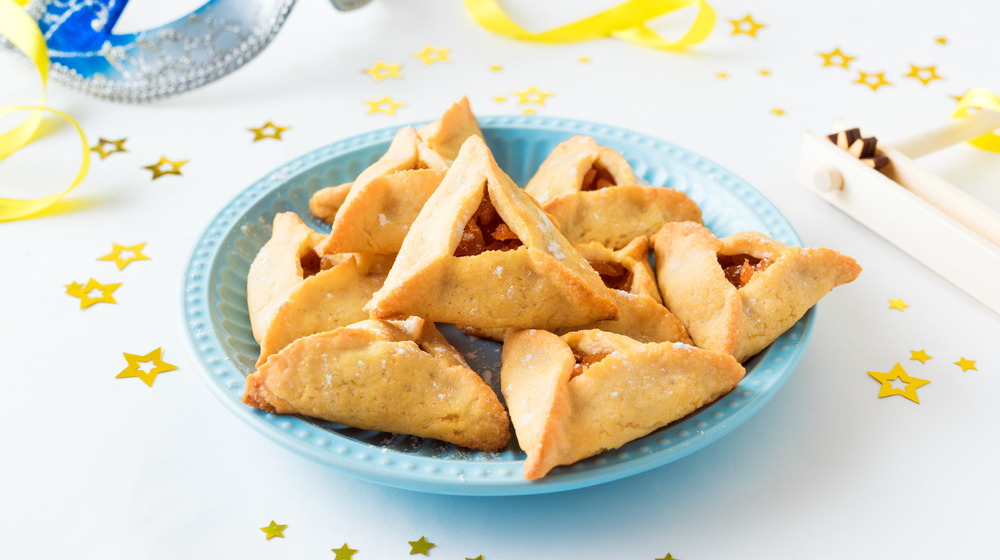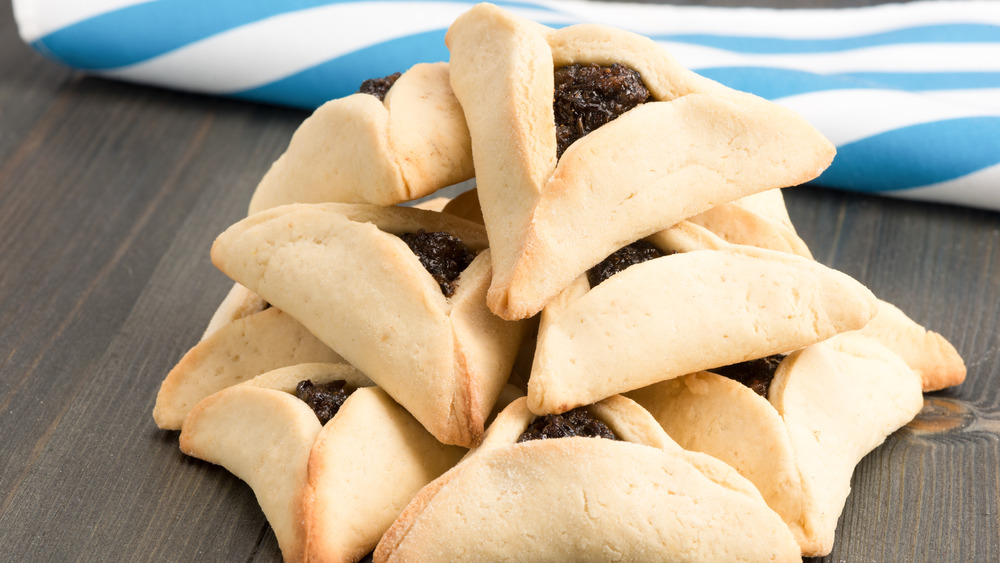What Are Hamantaschen And How Do You Make Them?
With a few possible exceptions, traditional holidays come from a dark event in history, usually arising from a "light triumphs over dark" scenario. But as children, we were more likely to remember those days as a time we could legitimately enjoy seasonal treats, like the triangular pastries known as hamentaschen, which are usually served at Purim.
Purim itself marks a historic event when the Jews are saved from persecution by rulers in the time of the ancient Persian Empire. The story is recorded in the bible under the Book of Esther (via Britannica). The treat that is served on this day isn't actually named for any of the heroes in this story – Queen Esther, her adoptive father Mordecai, and Esther's husband Ahasuerus, the king. Instead, it's named after the villain who tried to commit ancient genocide: Haman. Depending on who you ask, the pastry itself represents his ears or his tri-cornered hat (via Tori Avery).
Hamentaschen can be filled with anything
In keeping most mouthwatering cookie recipes, hamantaschen are made with a combination of ingredients that include flour, sugar, and fat, which can come in the form of shortening, oil, butter, or cream cheese; the fat can determine whether your cookie comes out crumbly (oil) or soft (dairy). Danielle Feinberg, who writes for My Jewish Learning, also says that the pastry can be filled with just about anything you might think about, including jam, chocolate, and Nutella. But if you really want to go down the traditional route, the pastry would be filled with poppy seed ("mohn"), which can represent Haman's bribes to the king, Ahasuerus (we can totally see the hamentaschen standing in for a money purse filled with coins).
The success involved in turning out achieving good hamentaschen involves making the pastry stand on its own like a tri-cornered hat. To do this, Tori Avery recommends a number of solid doughs that are both easy to handle and stable enough to stand straight and tall. She also recommends making fillings thick enough so they aren't tempted by heat to escape the cookie, leaving you with a sweet (albeit tasty) mess on your cookie sheet. Neither should they be so thick that they end up dry when the oven dinger dings and the baking is done. We recommend a few practice runs before the event, with a (socially distanced) tasting session to follow. Your friends will thank you.

